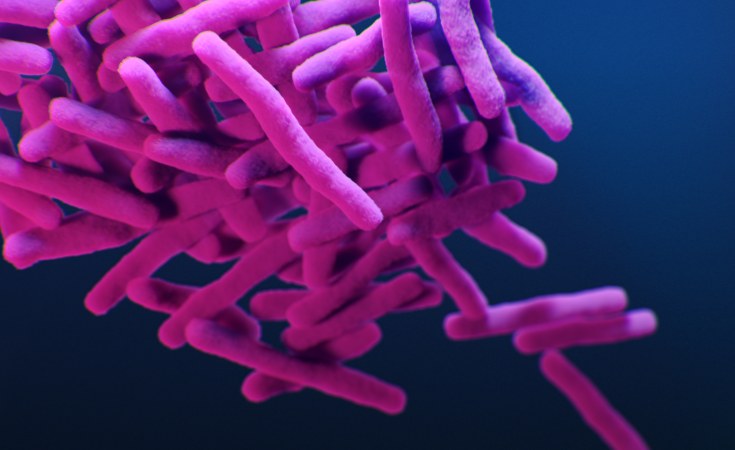Detecting tuberculosis early could play a significant role in eradicating the world's most deadly infectious disease. The World Health Organization says 1.5 million people die from this devastating disease each year.
People infected with Mycobacterium tuberculosis, the TB bacteria that attack the lungs, often do not know that they have it until their symptoms become severe. Two out of every five cases of TB remain undiagnosed or hidden.
One of the dangers of this is unknowingly infecting others.
Current diagnostic methods are slow, often expensive, sometimes difficult to administer and not easily accessible in the low-income regions where TB is most prevalent.
The oldest test, the sputum smear, has been used for 100 years to detect TB. It is outdated, clumsy and can take three days to process.
GeneXpert technology, the current gold standard for TB diagnosis, can detect the disease in an hour but is expensive and not available in remote areas.
Improvements in screening and diagnosis could help eradicate this curable disease.
One of the new routes to better diagnosis may be through detecting TB on the skin.
Diagnosing a sickness
Diseases have tell-tale chemical signatures.
Some cancers, for example, produce signs which dogs, with a sense of smell anywhere from 1,000 to 10,000 times better than that of humans, can be trained to detect.
Our team at the University of Pretoria looked at whether a silicone rubber sampler could help us identify the chemical signatures of TB.
We developed a patch, similar to a plaster (adhesive bandage), that could detect some of the chemicals from the TB bacteria.
We found we were able to distinguish between TB-positive and TB-negative individuals.
Our research holds promise for an inexpensive test that could be easy to transport and simple enough so that it would not need a healthcare worker to administer.
It all started with the mosquito
In 2021 we looked into why mosquitoes bite some people and not others.
We investigated whether there was a chemical difference to the skin surface between individuals who perceived themselves as being attractive to mosquitoes and those who were not.
Using a silicone rubber sampler, we were able to test the skin surface of 20 individuals. These samplers were specially developed and could be worn as a bracelet or an anklet.
We found chemical differences between the volunteers who were attractive to mosquitoes and those who were not.
Turning to the TB test
We built on the mosquito test to develop our research into TB detection. Could the deadly respiratory disease be diagnosed by attaching a plaster to a patient's skin?
Skin patches, similar to a plaster, equipped with small silicone rubber bands were attached to the wrists of 15 TB-positive individuals at the Steve Biko Academic Hospital and the Tshwane District Hospital in Pretoria. Likewise, the rubber bands were attached to 23 TB-negative individuals at the University of Pretoria.
The silicone rubber bands served as effective traps for semi-volatile and volatile organic compounds emitted by the body during the sampling period.
The bands were comfortable and non-restrictive and were worn for between 30 and 60 minutes. During this sampling period participants were free to go about their routines.
The bands were easily removed and sent to the laboratory.
In the laboratory we were able to separate the large number of chemical compounds found in the silicone rubber and were able to detect 27 compounds associated with TB.
Promise of easy, inexpensive results
As we refine and expand our findings, the human skin test for TB holds promise as a non-invasive screening tool in the fight against this infectious disease.
Our findings showed that:
- it is feasible to detect TB through skin emanations
- the small and lightweight rubber band sample would be particularly suitable for use in rural and remote regions
- individuals would not have to travel to a clinic or a hospital for testing as the patches could be applied at schools, households and gatherings
- no special arrangements would be needed to transport the bands.
This exciting breakthrough is not restricted to TB, but can also be repurposed to help detect other diseases such as malaria.
*Portia Makhubela and Egmont Rohwer co-authored the research on which this article was based.
Yvette Naudé, Manager and NRF-rated researcher: Chromatography Mass Spectrometry - University of Pretoria and UP Institute for Sustainable Malaria Control (UP-ISMC), University of Pretoria


